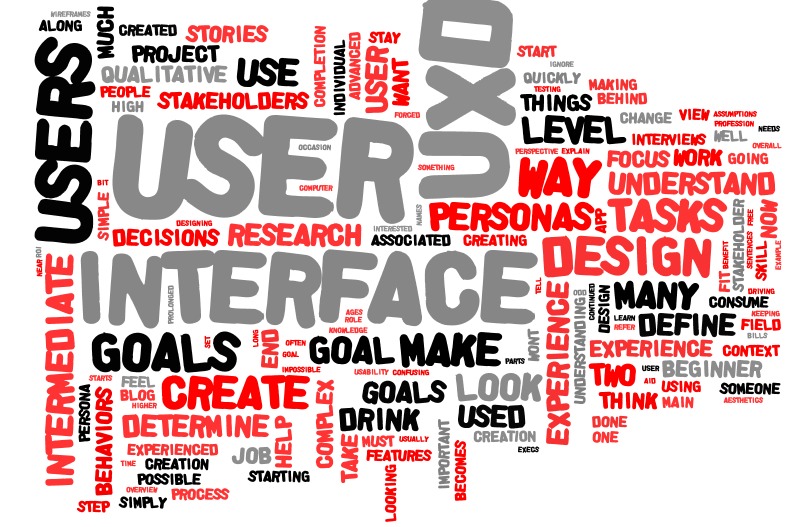
What is User Experience Design? Trying to explain in a quick tidbit is near impossible, so I’m going to attempt to tell you over two exciting blog posts. This is of course no means an exhaustive step by step run-down but, instead, more of a high level look at what it is to be a UXD.
An Overview – The Job of the UXD
UXD in itself is a multi-disciplinary field and comprises many design disciplines as well as many social sciences. They are used in conjunction with each other to create a more refined and user-friendly experience. User-centered design is at the heart of UXD
The most common misinterpretation and one that grates on me the most is the view of many that UXD is simply another name for usability design! It’s not! It incorporates much more than that.
To make things more confusing the term ‘User Experience Design’ is considered by some as a misnomer and I personally fit firmly in the ‘we create an experience, we don’t design an experience’ camp. UXD for me is much more than just designing an interface or making something look aesthetically pleasing for the masses – it’s about researching your market & understanding your user, creating personas from qualitative research and stakeholder interviews, then using those personas to create credible user stories and context scenarios. Only then can we begin to understand the individual goals of our users.
Yes, it’s fair to say we in the profession do use design a lot and we do refer to ourselves as designers, but let’s be honest, if we called ourselves ‘User Experience Creationists’ it would make us sound a bit godlike!
In a nutshell we’re all the same:
- We’re all fussy
- We all want things to work the way we think that they should work
- We’re all guilty of being selfish users.
But that’s how it should be – things should work the way you want them and it’s our job to make sure that your user experience is as fluid and pain free as possible. If you’re frustrated then the UXD hasn’t done their job. And they should be shot.
So UXD – what’s it all about then? It’s been forced upon the design community and now high-level execs are listening open eared. We’ll now take a high level view of UXD and will look at the following subjects here on the Tecmark blog over two parts;
- Understanding the user
- Persona Creation
- UXD Goals
- User stories
- Wireframes
- Graphics
UXD – UNDERSTANDING THE USER
A user is anyone who comes into contact with your interface. These users are complex machines. They’re individual and no two users are the same. When starting out on a project we can’t make assumptions or use stereotypes to define the flow or feel of an interface – if we did, the interface would fail.
Users change. They are constantly evolving their skill level, or on the odd occasion forgetting their level of skill and starting over again. If you think about when you first used a computer you’ll quickly understand what I mean. Everyone starts out as a beginner user what was once a beginner user quickly becomes an intermediate user but many intermediate users never become experienced users. The transition to experienced user can be a long process. Even if someone becomes an advanced user, they could easily slip back into the category of intermediate user without continued use.
Many users will fit into the intermediate field for a prolonged period of time. When we create an interface we create it for all users but with a higher focus on the intermediate user. Ignore the beginner and they wont stay to learn your products, ignore the more advanced user and they wont stay interested and will move onto more engaging apps or websites.
And lets not forget about the stakeholders – the people who pay the bills. It’s important to make considerations for stakeholders. They are in no way as important as the end user from a UXD perspective, but they usually control all the money for the project and can and most often will dictate exactly what they want in the system. It’s the job of the UXD to help the stakeholders understand the importance of UXD and how it can benefit their project overall, specifically with focus on ROI.
UXD – PERSONA CREATION
Once user research has been completed it is now possible to create personas. This is done through qualitative research and stakeholder interviews.
Personas are there to investigate and define the behaviors of users. They are created to understand the motivations and the different goals. There will be several personas for each interface. It’s a way of grouping together behaviors and users and helps all the way through the creation process. We use them at the beginning to define the goals and all the way through to the end to define the testing procedures.
We use personas to determine how an interface should look and feel. They’re used to determine what an interface should do and look like, to articulate the reasons behind decisions, as well as the already mentioned goals and tasks. They help to determine a range of behaviors and aptitudes between a collective of people, which in turn can help determine which features take prominence within an interface.
A persona is created by looking at demographic and psychographic data compiled through the aforementioned qualitative research stage, along with expert knowledge of persona creation. They are given names, ages, jobs and take on the role of a real person. They are used to assess how someone would behave with an interface, how they would react when an error occurred, what level of user they are… They are our friends and we love them.
GOAL CREATION
Goals are the UXD’s main focus when creating an interface – not the commonly thought of tasks, features or functions. Goals must be the main driving force behind design decisions associated with the interface.
Let’s put this in the context of an everyday task – making a hot drink! When you make your drink, the end goal is to consume that drink. The actions of boiling water, adding milk, sugar, tea or coffee are simply tasks along the way. The goal – ultimately to consume the drink – does not change throughout.
Once we have an understanding of the user goals, we can start to compile a list of tasks that aid in the completion of that goal, whilst keeping cognitive loads to a minimum.
UXD is very much goal orientated and many (if not all) of the decisions are all geared towards the simple completion of otherwise complex goals and tasks. Before we start to think about aesthetics of the app or website we’re working on, we set about looking at the goals associated with the interface.
Goals aren’t complex. They are single, simple sentences. For example, “Mark needs to book train tickets using the app.” That’s the goal. There are going to be more tasks in there to facilitate it, but in the simplest form that’s what must happen.
So here we’ve covered the basics. In part two, we will talk about user stories, wireframes and graphics.

